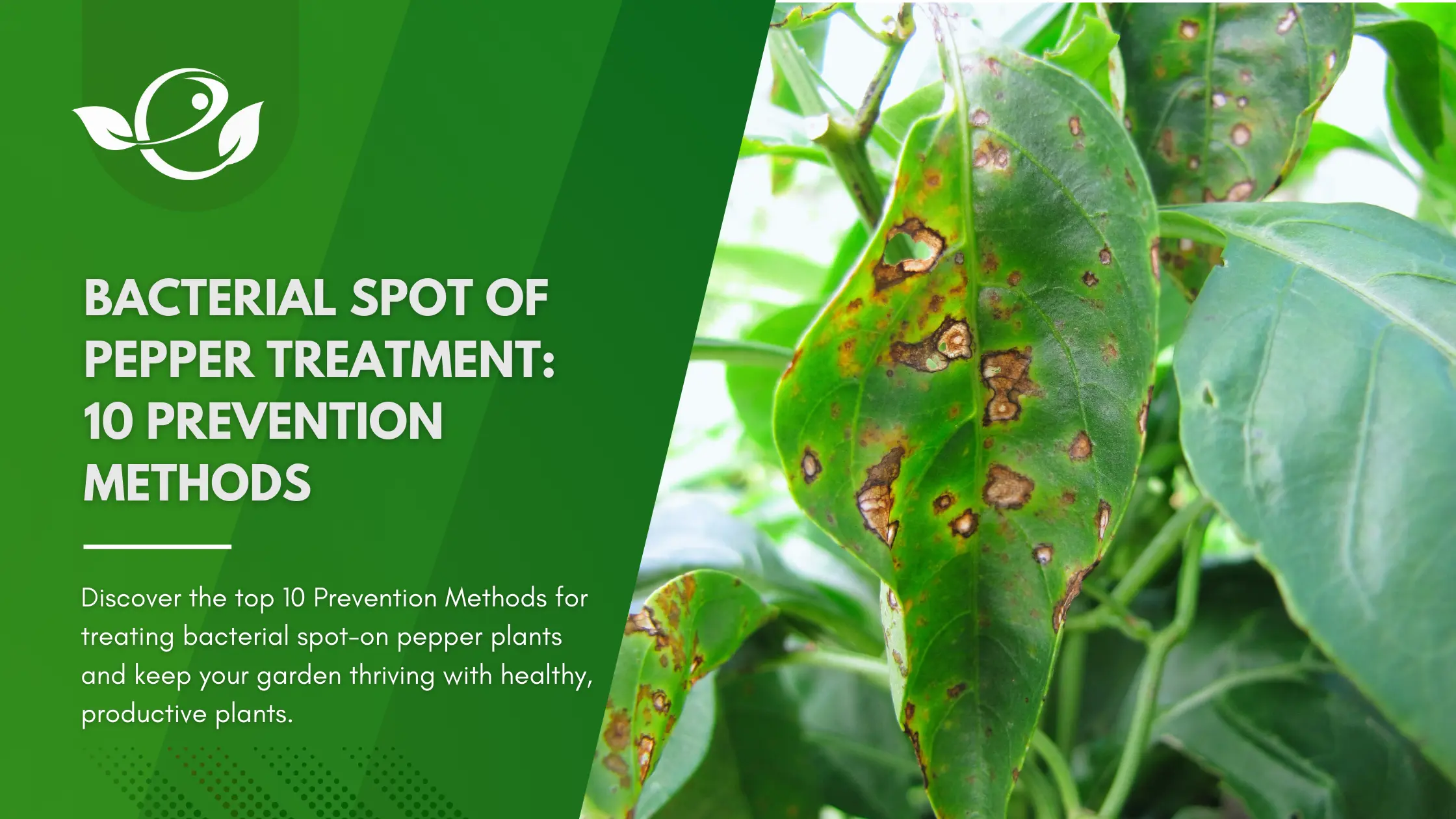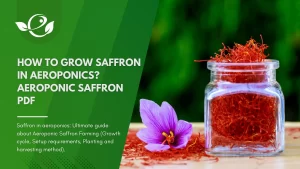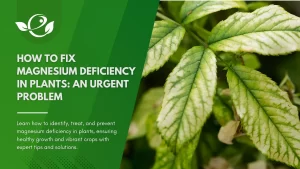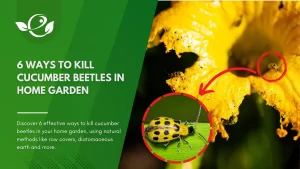Table of Contents
Imagine this: you’re a pepper plant, standing tall and proud in your well-tended garden. Your leaves are lush, your fruits are ripening, and life is good. Suddenly, out of nowhere, you start developing unsightly spots. Your leaves turn yellow, your fruits get scabby, and before you know it, you’re no longer the star of the garden show. What’s happening? Did someone cast a bad spell on you? Nope, it’s the dreaded bacterial spot making its unwelcome appearance.
Bacterial spot is like that one party crasher who not only shows up uninvited but also spills drinks everywhere and makes a mess. This pesky disease, caused by the bacteria Xanthomonas spp., can wreak havoc on your beloved pepper plants if not addressed promptly. But fear not, fellow gardeners! With the right knowledge and a strategic approach, you can outsmart this botanical villain and keep your pepper plants thriving.
In this guide, we’ll dive deep into the world of bacterial spot of pepper. We’ll cover everything from identifying the symptoms and understanding the causes to implementing effective prevention and treatment strategies. So, grab your gardening gloves, and let’s get to work!
Causes and Spread
Pathogen Biology
Bacterial spot of pepper is primarily caused by several species of Xanthomonas bacteria, with Xanthomonas euvesicatoria being the most common culprit. Bacterial spot occurs worldwide and is one of the most devastating diseases on pepper and tomato crops grown in warm, moist environments. The pathogen can survive in association with seeds, either externally or internally as well as on specific weeds and later spreads through rain or overhead irrigation. It enters the plant through leaf pores and wounds. Optimum temperatures range from 25 to 30°C. Once the crop is infected, the disease is very difficult to control and can lead to total crop losses.
Scientific name: Xanthomonas sp.

Modes of Transmission
- Seed-borne Transmission: Infected seeds are one of the primary sources of bacterial spot. The bacteria can survive on the seed coat and infect seedlings shortly after germination.
- Soil and Water Sources: The bacteria can persist in soil and water, spreading to healthy plants through splashing water, contaminated irrigation systems, or runoff.
- Mechanical Transmission: Tools, hands, and even clothing can transfer the bacteria from infected plants to healthy ones. This mode of transmission is common in commercial farming operations where equipment is frequently shared.
With the causes and transmission methods understood, it’s time to discuss how to prevent this disease from taking hold in the first place.
Symptoms of Bacterial Spot
The first symptoms are small, yellow-green lesions on young leaves, which usually appear deformed and twisted. On older foliage, lesions are rather angular, dark-green, and greasy in appearance, often surrounded by yellow circles. They are often more numerous on leaf margins or tips. Eventually, the spots look like shot holes because the center dries up and disintegrates. Fruit spots (up to 0.5 cm) start off as pale-green, water-soaked areas, which eventually roughen, becoming brown and scabbed.
- Small, yellow-green lesions on young leaves.
- Dark, water-soaked lesions on older foliage with yellow circles.
- Deformed and twisted leaves.
- Water-soaked areas on fruit, becoming rough, brown, scabbed.
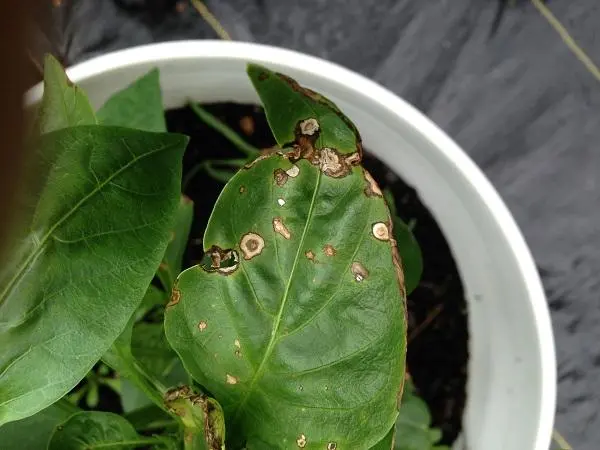
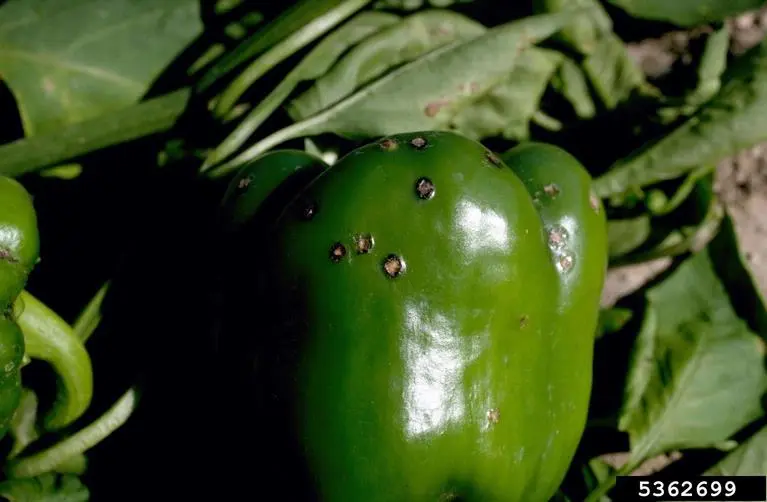
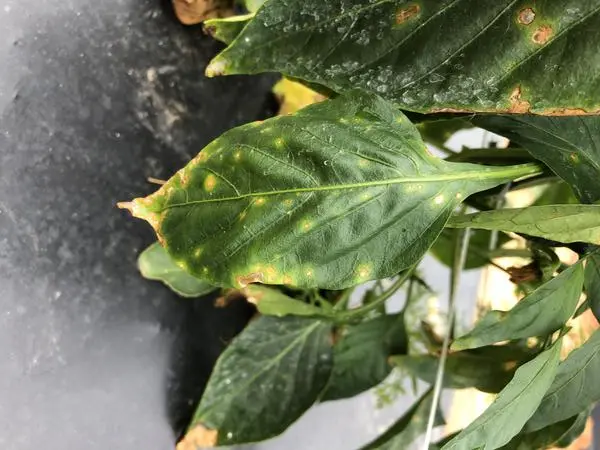
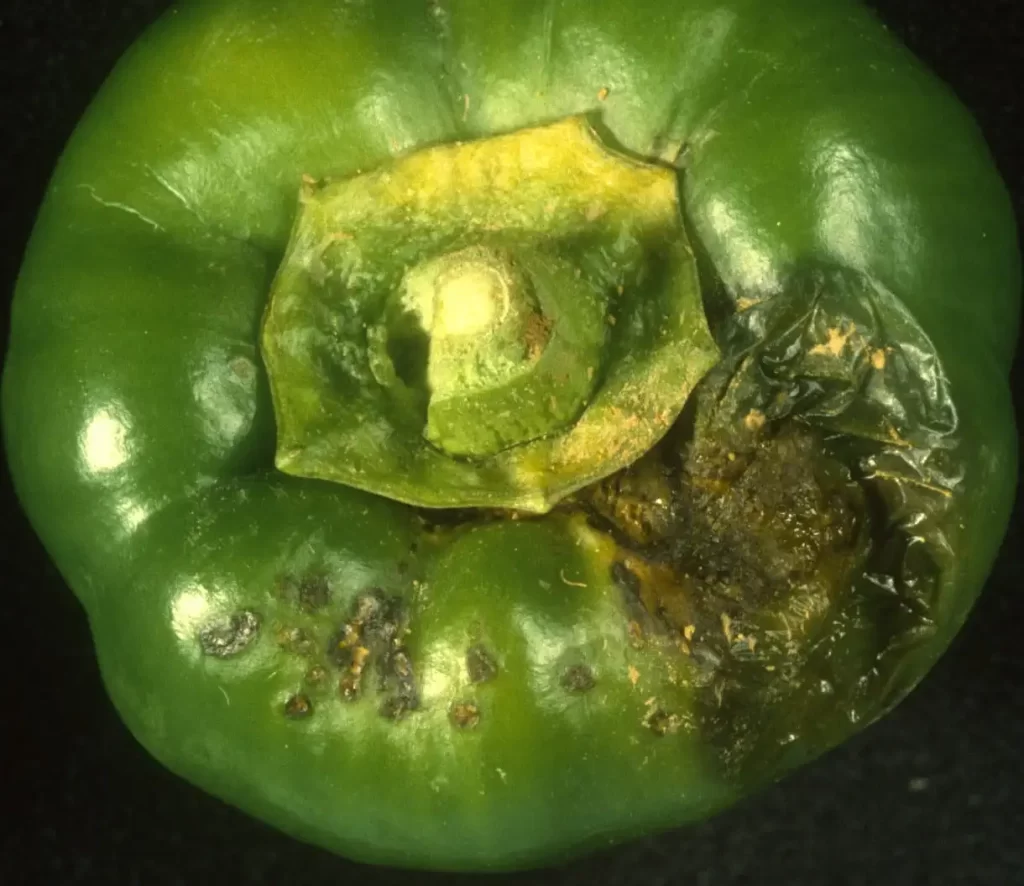
Leaf Symptoms
Bacterial spot manifests itself on the leaves as small, water-soaked spots that eventually turn dark brown or black. These spots are often surrounded by a yellow halo, giving the leaves a speckled appearance. As the disease progresses, the affected leaves may yellow, wilt, and drop prematurely, leading to defoliation.
Fruit Symptoms
On the fruits, bacterial spot causes raised, scab-like lesions that can range in color from brown to black. These lesions often crack open, creating entry points for secondary infections. In severe cases, the fruits may become misshapen and unmarketable, significantly impacting yield and quality.
Understanding these symptoms is crucial for early detection and timely intervention. Now that we’ve identified the telltale signs of bacterial spot, let’s explore what causes this disease and how it spreads.
Top 10 Prevention Methods
- Plant-certified, disease-free seeds. Always purchase seeds from reputable suppliers who guarantee that their seeds are free from bacterial contamination. Also Plan a 2-3 year crop rotation with non-susceptible plants.
- Use resistant varieties if available in your area.
- Inspect fields regularly for signs of the disease.
- Remove and burn any seedling or plants with leaf spots, as well as adjacent plants.
- Remove weeds in and around the field.
- Mulch around plants helps to avoid soil to plant contamination.
- Clean tools and equipment after use if working between different fields.
- Avoid overhead irrigation and working in fields when foliage is wet.
- Plow plant debris deep into the soil after harvest.
- Alternatively, remove them and burn them.
Cultural Control Methods
Proper Irrigation Practices
- Avoid Overhead Irrigation: Overhead watering creates a moist environment that promotes bacterial spread. Instead, use drip irrigation systems that deliver water directly to the soil.
- Implementing Drip Irrigation Systems: Drip irrigation not only minimizes leaf wetness but also conserves water and reduces weed growth.
Plant Spacing and Pruning
- Ensuring Adequate Plant Spacing: Proper spacing allows for better air circulation, reducing humidity around the plants and lowering the risk of bacterial infection.
- Pruning Techniques: Regularly prune plants to remove excess foliage and improve air flow. Focus on removing lower leaves that are more susceptible to soil splash contamination.
Soil and Mulch Management
- Use of Organic Mulches: Applying organic mulches, such as straw or compost, helps to reduce soil splash and maintain soil moisture levels. Mulches also promote a healthy soil environment that can suppress pathogenic bacteria.
- Soil Health Improvement Practices: Incorporate organic matter into the soil to enhance its structure and microbial diversity. Healthy soil is more resilient to diseases and supports robust plant growth.
Cultural control methods are effective in minimizing the impact of bacterial spot. However, in severe cases, chemical control measures may be necessary to manage the disease effectively.
Chemical Control for Bacterial spot of pepper
Always consider an integrated approach with preventive measures together with biological treatments if available. Copper-containing bactericides can be used as a protectant and give partial disease control. Application at the first sign of disease and then at 10- to 14-day intervals when warm, moist conditions prevail. The active ingredients copper and mancozeb give a better protection.
Product recommendations are based on following active ingredients: Copper Oxychloride 50.0% WP;
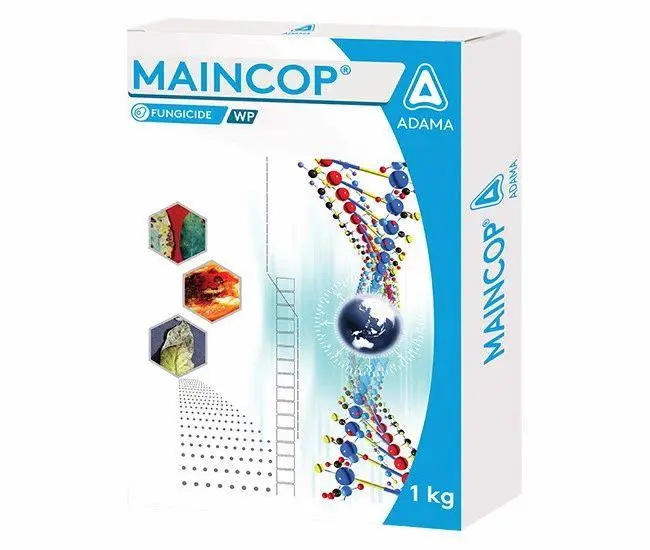
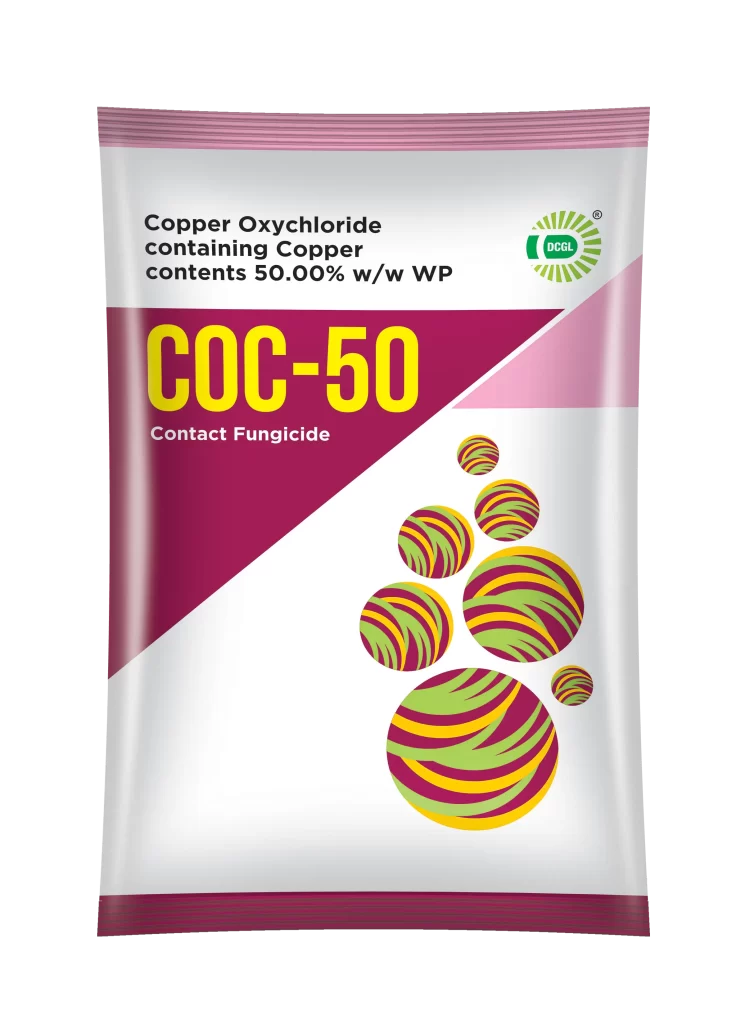

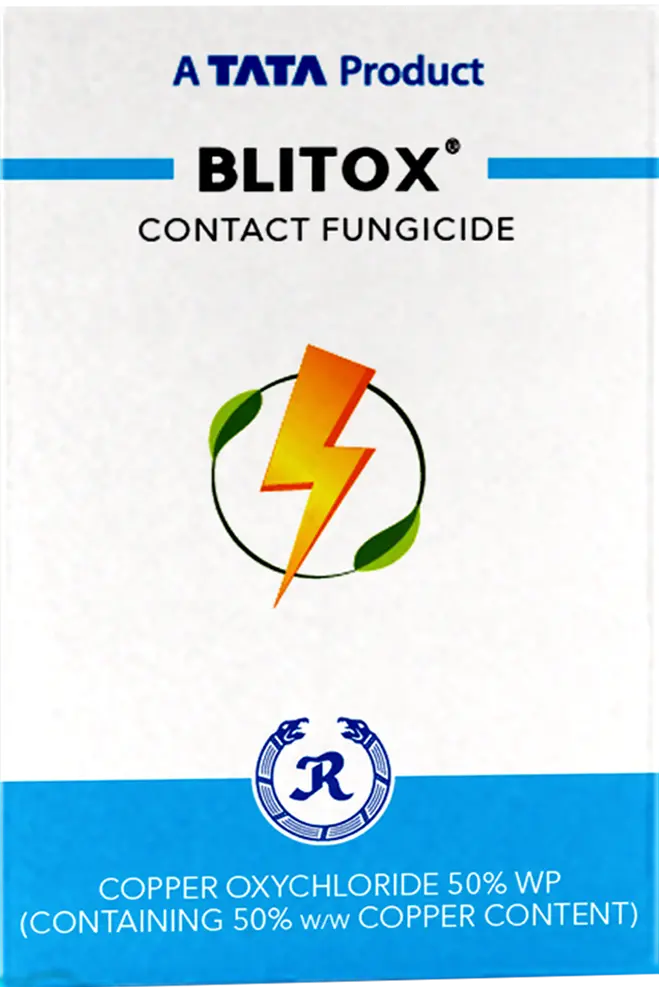
Application Guidelines and Timing: Apply bactericides at the first sign of disease and continue at regular intervals (7-10 days) as needed. Follow label instructions carefully to avoid phytotoxicity and ensure effectiveness.
Organic Control for Bacterial spot of pepper
Recommendations: We recommend following organic control methods in the early stages of a disease or when the crop is close to harvesting. In more advanced stages of a disease, please follow chemical control measures. Mixing or applying different products at the same time is not recommended.
Bacterial Spot is very difficult and expensive to treat. If the disease occurs early in the season, consider destroying the entire crop. Copper-containing bactericides provide a protective cover on foliage and fruit. Bacterial viruses (bacteriophages) that specifically kill the bacteria are available. Submerge seeds for one minute in 1.3% sodium hypochlorite or in hot water (50°C) for 25 minutes.
Integrated Pest Management (IPM)
- Combining Chemical and Non-chemical Methods: IPM involves using a combination of cultural, biological, and chemical controls to manage bacterial spot. This approach reduces reliance on chemicals and promotes sustainable farming practices.
- Monitoring and Threshold Levels for Bactericide Application: Regularly monitor plants for signs of bacterial spot and apply bactericides only when necessary. Establish threshold levels to determine when chemical intervention is warranted, thereby minimizing unnecessary treatments.
Chemical control measures, when used judiciously, can effectively manage bacterial spot. However, for long-term sustainability, biological control options should also be considered.
Conclusion
Managing bacterial spot of pepper requires a comprehensive and integrated approach. By understanding the symptoms and causes, implementing prevention strategies, and utilizing cultural, chemical, and biological control methods, you can effectively manage this disease and ensure the health and productivity of your pepper plants.
Ongoing research and technological advancements continue to improve our understanding and management of bacterial spot. Innovations in plant breeding, biocontrol products, and diagnostic tools hold promise for more effective and sustainable disease control in the future.
With the right knowledge and a proactive approach, you can keep bacterial spot at bay and enjoy a bountiful harvest of healthy, delicious peppers. So, roll up your sleeves, put on your gardening hat, and let’s give bacterial spot the boot! Happy gardening!
FAQs on Bacterial Spot of Pepper Treatment
How do I identify bacterial spot on my pepper plants?
Look for small, water-soaked spots on the leaves that turn dark brown or black, often with a yellow halo. On the fruits, you may see raised, scab-like lesions. Infected leaves may yellow, wilt, and drop prematurely, leading to defoliation.
What conditions favor the development of bacterial spot?
Bacterial spot thrives in warm, humid conditions. High humidity, frequent rainfall, and temperatures between 25-30°C create an ideal environment for the bacteria to spread and infect pepper plants.
How does bacterial spot spread?
The bacteria can spread through infected seeds, soil, water, and mechanical means such as contaminated tools and hands. It can also be transmitted via splashing water from rain or irrigation.
Can I prevent bacterial spot by choosing the right seeds?
Yes, using certified disease-free seeds from reputable suppliers can significantly reduce the risk of bacterial spot. Additionally, treating seeds with hot water or chemical treatments can help kill any bacteria present on the seed coat.
What should I do if I discover bacterial spot in my garden?
If you find bacterial spot, promptly remove and destroy infected plant parts to prevent the spread. Implement cultural control measures such as improving air circulation and irrigation practices. Consider applying bactericides if necessary and continue to monitor your plants closely.
